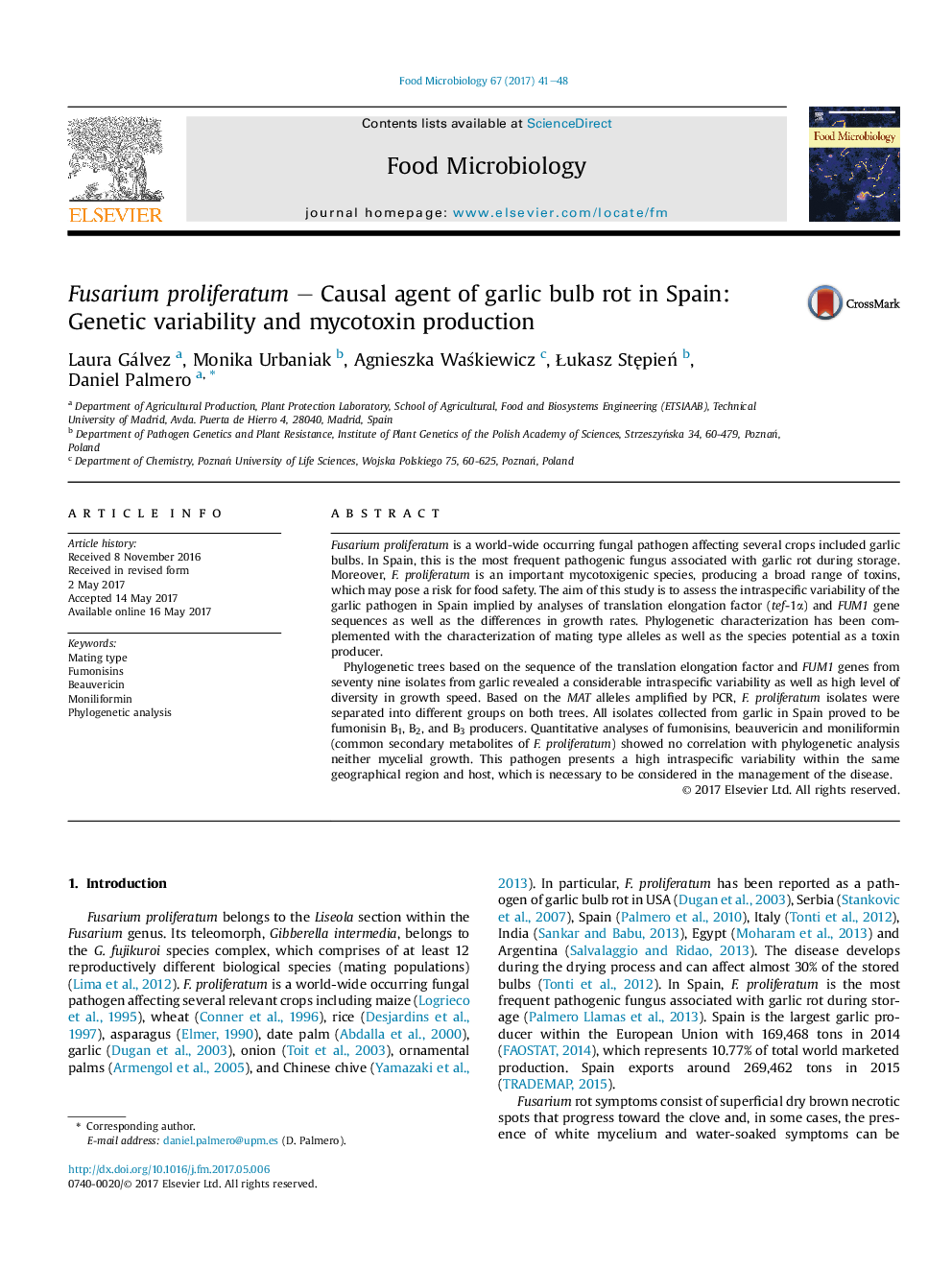| کد مقاله | کد نشریه | سال انتشار | مقاله انگلیسی | نسخه تمام متن |
|---|---|---|---|---|
| 5740055 | 1616234 | 2017 | 8 صفحه PDF | دانلود رایگان |

- A considerable intraspecific diversity was found for F. proliferatum from garlic.
- Growth rates did not correlate with geographic origin, neither with phylogenetic (tef-1α and FUM1) or mycotoxins production.
- Results on the mating type alleles ratio suggest possible ocurrence of sexual reproduction of F. proliferatum.
- Isolates of F. proliferatum collected from garlic proved to be fumonisin B1, B2 and B3 producers.
- Beauvericin and moniliformin production suggest that these toxins are very common secondary metabolites of F. proliferatum.
Fusarium proliferatum is a world-wide occurring fungal pathogen affecting several crops included garlic bulbs. In Spain, this is the most frequent pathogenic fungus associated with garlic rot during storage. Moreover, F. proliferatum is an important mycotoxigenic species, producing a broad range of toxins, which may pose a risk for food safety. The aim of this study is to assess the intraspecific variability of the garlic pathogen in Spain implied by analyses of translation elongation factor (tef-1α) and FUM1 gene sequences as well as the differences in growth rates. Phylogenetic characterization has been complemented with the characterization of mating type alleles as well as the species potential as a toxin producer.Phylogenetic trees based on the sequence of the translation elongation factor and FUM1 genes from seventy nine isolates from garlic revealed a considerable intraspecific variability as well as high level of diversity in growth speed. Based on the MAT alleles amplified by PCR, F. proliferatum isolates were separated into different groups on both trees. All isolates collected from garlic in Spain proved to be fumonisin B1, B2, and B3 producers. Quantitative analyses of fumonisins, beauvericin and moniliformin (common secondary metabolites of F. proliferatum) showed no correlation with phylogenetic analysis neither mycelial growth. This pathogen presents a high intraspecific variability within the same geographical region and host, which is necessary to be considered in the management of the disease.
Journal: Food Microbiology - Volume 67, October 2017, Pages 41-48